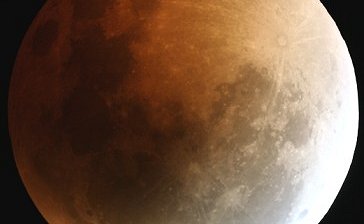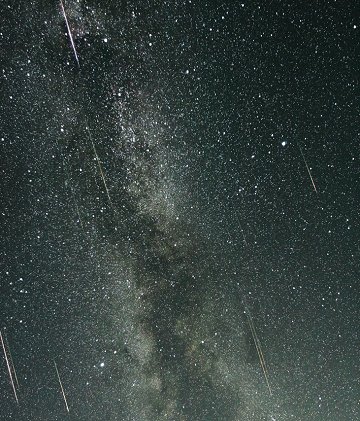| SUNSET PLANETS: Venus, Mercury and Saturn have gathered together to form a compact (5o wide) triangle in the twilight sky after sunset. To see them, use binoculars to scan the horizon, low and due west. Consider this a prelude to an even prettier conjunction of Venus and Mercury during the week of Aug. 17th-24th. Sunset is where the action is: sky map. LUNAR ECLIPSE: This Saturday, August 16th, people on every continent except North America can see a lunar eclipse. At maximum, around 2110 UT, 81% of the Moon will be inside the red core of Earth's shadow. It's going to look something like this: 
Photo credit: James Tse, Christchurch, New Zealand. Aug. 28, 2007
The eclipse lasts for more than three hours (19:36 UT to 22:44 UT), so there is plenty of time to gaze, drink coffee and take pictures. Follow the links for webcasts and more information: PERSEID RECAP: Who knew the Perseids would be so good? The shower peaked on August 13th with as many as 135 meteors per hour, making it one of the best shows in years: data. "What a fabulous display, with good numbers of bright meteors and lots of faint ones too," says Pierre Martin of Ottawa, Ontario. Using a Canon 30D, he photographed the Milky Way at two-minute intervals from moonset until dawn and created this composite image of the shower: 
Earth is exiting the Perseid debris stream now, bringing the shower to an end, although it will be back in August 2009. Until then, browse the gallery: UPDATED: Perseid Meteor Gallery
[Previous Perseids: 2007, 2006, 2005, 2004, 2002, 2001] | 
